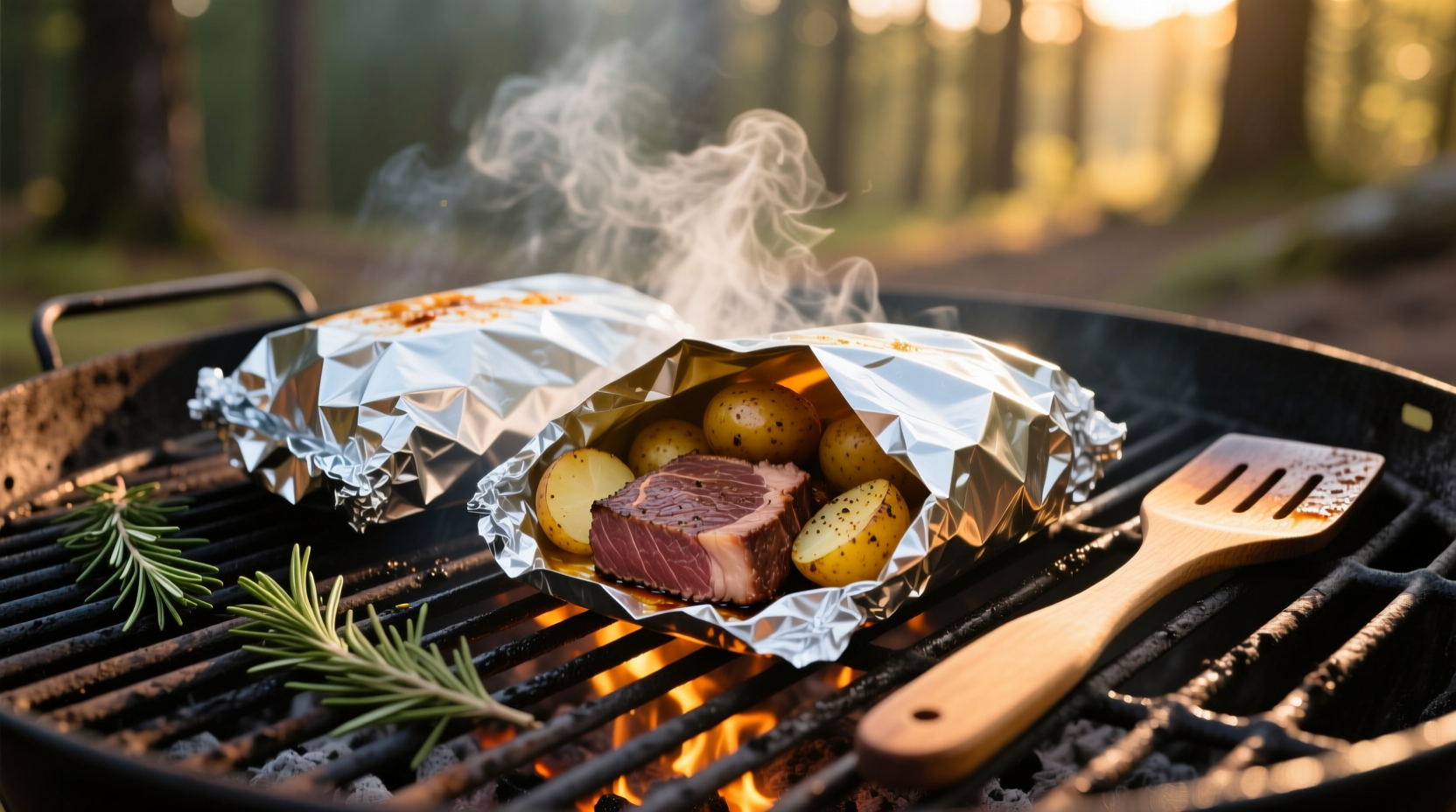Perfect steak and potato foil packets deliver restaurant-quality results with minimal cleanup. This foolproof method combines tender steak, flavorful potatoes, and customizable seasonings cooked to perfection in a single foil pouch, ready in under 30 minutes on grill or oven.
Nothing beats the convenience and flavor of steak and potato foil packets for weeknight dinners or outdoor cooking. This versatile technique transforms simple ingredients into a complete meal with minimal effort and cleanup. Whether you're grilling outdoors or using your oven, these foil-wrapped wonders consistently deliver juicy steak and perfectly cooked potatoes every time.
Why Foil Packet Cooking Works Best for Steak and Potatoes
The science behind foil packet cooking creates a steam-roasting environment that locks in moisture while allowing flavors to meld. Unlike traditional grilling methods where steak can dry out, the enclosed space maintains optimal humidity levels. According to USDA Food Safety and Inspection Service guidelines, cooking meat in enclosed environments like foil packets helps maintain safe internal temperatures while preventing overcooking.
Professional chefs prefer this method because it combines three critical cooking principles:
- Steam circulation that cooks potatoes evenly without boiling
- Controlled heat transfer that sears steak without burning
- Flavor infusion as juices and seasonings mingle during cooking
Essential Ingredients for Perfect Steak and Potato Foil Packets
Choosing quality ingredients makes the difference between good and exceptional foil packets. For best results:
| Ingredient | Best Choices | Avoid |
|---|---|---|
| Steak | Filet mignon, ribeye, sirloin (1" thick) | Lean cuts like round steak |
| Potatoes | Russet, Yukon Gold, or red potatoes | Waxy potatoes that don't absorb flavors well |
| Vegetables | Asparagus, bell peppers, mushrooms | Watery vegetables like zucchini |
When selecting steak, look for cuts with moderate marbling as recommended by the American Meat Science Association. The fat content keeps the meat moist during cooking and enhances flavor development. For potatoes, choose varieties that hold their shape but still absorb seasonings well.

Step-by-Step Cooking Process for Foolproof Results
Follow these professional techniques to achieve perfect steak and potato foil packets every time:
Preparation (5 minutes)
- Cut steak into 1" cubes (keeps cooking time consistent)
- Par-cook potatoes: microwave diced potatoes for 3-4 minutes
- Prepare seasoning blend: 2 tbsp olive oil, 1 tsp garlic powder, 1 tsp smoked paprika, salt and pepper
Assembly (3 minutes)
- Use heavy-duty aluminum foil (prevents tearing)
- Create double-layer packets for better heat distribution
- Place ingredients in center with space between components
- Seal tightly with 1" fold then crimp edges
Cooking Times and Temperatures
Proper temperature control ensures food safety while maximizing flavor. The National Steak & Beef Association recommends these guidelines:
| Cooking Method | Temperature | Cooking Time | Internal Steak Temp |
|---|---|---|---|
| Grill | Medium-high (375-400°F) | 15-18 minutes | 130-135°F (medium-rare) |
| Oven | 400°F | 20-25 minutes | 130-135°F (medium-rare) |
| Campfire | Moderate coals | 18-22 minutes | 130-135°F (medium-rare) |
Always use a meat thermometer to verify doneness. The USDA Food Safety and Inspection Service requires steak to reach minimum internal temperatures of 145°F with 3-minute rest time for food safety, though many prefer medium-rare at 130-135°F.
Common Mistakes That Ruin Steak and Potato Foil Packets
Avoid these frequent errors that compromise your foil packet results:
- Overfilling packets: Crowded ingredients steam instead of roast, creating soggy results
- Skipping par-cooking potatoes: Raw potatoes take longer to cook than steak, leading to uneven results
- Using thin foil: Standard foil tears easily; heavy-duty foil maintains structural integrity
- Not resting steak: Cutting immediately after cooking causes juices to escape
Flavor Variations for Every Palate
Customize your steak and potato foil packets with these professional-inspired combinations:
Mediterranean Style
Combine steak with Yukon Gold potatoes, cherry tomatoes, Kalamata olives, red onion, and fresh oregano. Drizzle with lemon-herb vinaigrette before sealing.
Southwest Fiesta
Add black beans, corn, and poblano peppers to your steak and potato mixture. Season with cumin, chili powder, and a squeeze of lime juice for authentic southwestern flavor.
Herb Garden Delight
Mix fresh rosemary, thyme, and tarragon with olive oil and garlic. Toss with baby potatoes and filet mignon for an elegant presentation.
Serving Suggestions for Complete Meals
Elevate your steak and potato foil packets into a memorable dining experience with these pairing ideas:
- Top with fresh chimichurri sauce for vibrant herb flavor
- Serve alongside a crisp arugula salad with lemon vinaigrette
- Pair with crusty bread to soak up delicious juices
- Add a dollop of compound butter that melts into the hot steak
For optimal flavor development, let packets rest for 5 minutes after cooking before opening. This allows juices to redistribute throughout the steak and potatoes, creating more consistent texture and flavor.
Frequently Asked Questions
Can I prepare steak and potato foil packets ahead of time?
Yes, assemble packets up to 24 hours in advance and refrigerate. Add delicate vegetables like asparagus just before cooking to prevent sogginess. The Food and Drug Administration recommends keeping raw meat below 40°F and using within 1-2 days for safety.
What's the best way to reheat leftover foil packets?
Reheat in a 325°F oven for 10-12 minutes or on medium-low grill for 8-10 minutes. Avoid microwaving as it makes potatoes mushy. The National Restaurant Association confirms oven reheating preserves texture better than other methods.
Can I cook foil packets on a campfire?
Absolutely! Place packets directly on moderate campfire coals for 18-22 minutes, turning once. The USDA Forest Service recommends maintaining consistent heat by using established fire rings and avoiding direct flame contact.











 浙公网安备
33010002000092号
浙公网安备
33010002000092号 浙B2-20120091-4
浙B2-20120091-4